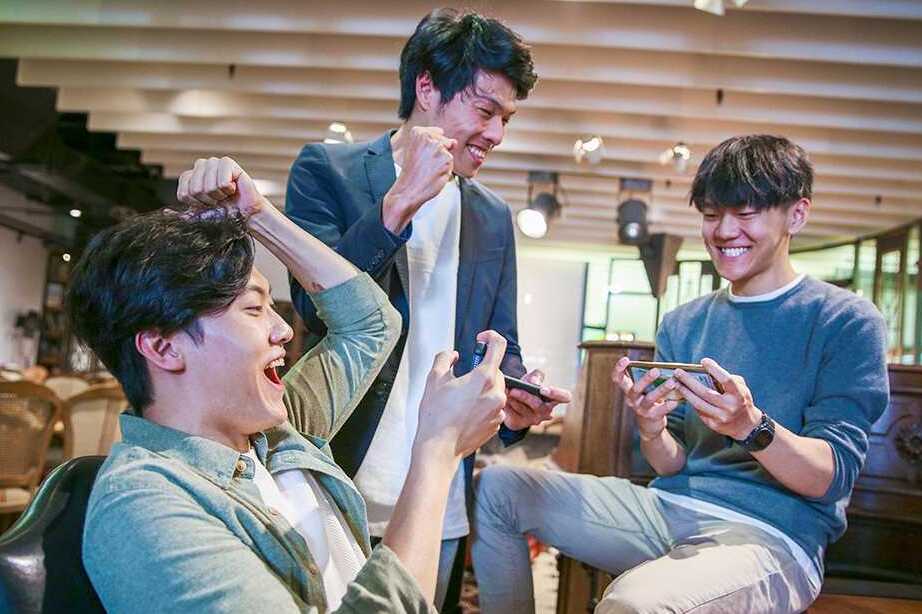5 gaming strategies to enhance your Loyalty Program.



Jean-Baptiste Le Blan
Catégorie : Fidélisation
Marketers are continuously looking for new ways to win and keep the attention of the 1.3 billion Chinese consumers. Over the years, many companies have been successful in gaining repeat customers through the use of loyalty programs, with 72% of shoppers in China claiming they were more likely to make a purchase from brands that have loyalty programs than those without.[1] However, as loyalty programs grow more popular, it’ll take more than the basic point-based loyalty program for brands to stand out against their competitors and keep consumers engaged.
When loyalty programs were first introduced, they consisted of a simple points and reward system, whereby each purchase granted members with points that they can use towards future rewards. For example, many airlines offer a frequent flyer program to encourage customers to collect points on flights they purchase. Once members accumulate enough points, they can redeem these points for discounted flights, in-flight benefits or travel essentials. Frequent flyer programs have been found to be effective in persuading customers to continue flying with the same airline even if they were dissatisfied with the service.[2] However, as time progressed, loyalty programs grew more elaborate; marketers began collecting customer data and developing different tiers of memberships and VIP clubs for exclusivity incentives. This was a huge success for companies like Starbucks. Members of Starbucks’ loyalty program collect stars with their purchase; members start at the Welcome Tier and work their way up to the Gold Tier for additional benefits. Although successful in maintaining loyalty, these programs had a limit in sustaining customer engagement. Today, marketers are aware it’ll take more than points, membership perks and exclusive clubs for customers to stay consistently engaged and loyal to a brand. The key to consumer engagement is through the use of gamification; a process which leverages the competitive nature and intrinsic reward system of humans to drive sales and leave a lasting impact on consumers.
Gamification refers to the process of incorporating engaging gaming elements into real-world activities. By utilizing the addictive qualities of video games, brands are successfully linking customer engagement with positive feelings such as increased dopamine, the feel-good hormone. The positive feelings generated through achievements (e.g., receiving points, discounts, rewards, etc.) can encourage continued interaction with your brand, product or service[3]. Customers are also more willing to make purchases if they’re having fun and receiving rewards from games. Due to its ability to increase stickiness, co-founder and chief strategy officer of Curiosity China, Alexis Bonhomme, considers it the next frontier in building viral and hyper social brand experiences on WeChat.[4]
1. Understand what motivates your customers.
Understanding the human nature of intrinsic motivation can benefit your company when it comes to encouraging your customers to participate in some type of activity. According to Bunchball, humans are motivated by the intrinsic need for autonomy, improvement, purpose, progress and social interactions more so than external motivators such as a large, one-time reward.[5] Taking this into account, LinkedIn added a progress bar tracker to showcase the completion of the user’s profile as achievements. This gamified element boosted user engagement and increased the rate of full profile completion rate by 55%.[6] Visually tracking progress turns this task into a challenge that encourages users to complete all the requirements listed in the profile.
2. Keep games entertaining.
Not only should games have a clear theme, story/background and set of rules, they should also be creatively designed and most importantly, fun. In 2018, luxury brand, Yves Saint Laurent (YSL), launched a pop-up “beauty hotel” at the Shanghai Modern Art Museum where visitors were invited to experience YSL makeup and other beauty items in person. Before arriving at the event, visitors were able to check-in on WeChat to read game instructions on how to unlock a hidden room to receive a surprise.[7] Not only was this game engaging, it was interactive; cultivating a positive experience for visitors to associate with the brand. During the event, YSL offered visitors to virtually try on lipstick with augmented reality (AR) technology and preorder the latest products. After the event, visitors were directed to an e-commerce platform on WeChat where they could easily purchase the beauty products they liked and receive reward points towards YSL’s loyalty program. [8]
3. Build dynamic challenges.
The use of points, levels, badges, leaderboards, rewards, and status will encourage customers to compete with friends and drive purchasing behavior. Challenges can include unlocking levels after completing tasks. Many luxury brands are aware of this powerful motivator and implemented gaming elements into their WeChat account and loyalty programs. For example, Hermès implemented a horseshoe toss game; Dior promoted their store opening through an interactive treasure hunt, winners received tickets to an exclusive event; and Guerlain promoted their new lipstick collection with their My Rouge-G game, challenging members to collect rewards by visiting physical stores. My Rouge-G attracted over 18,000 page views and approximately 10,000 players.[9]
4. Create a community.
Exciting and engaging games have the power to drive in-store participation. Fast food chain, KFC uses gamification to drive participation, sales and collect information on users through its Super App. In its first year of launching the Super App, they acquired 80 million members; this number rapidly grew to 120 million by their third year by transforming every customer connection point to one seamless digital solution.[10] For instance, KFC teamed up with Omoyji to strategically use location-based services and AR to encourage players to meet in-person to play together. KFC transformed 5000 of its locations to real ghost-hunting battlefields to resemble the Onmoyji ghost game. The result? 120 million players participated in the game and three million limited edition Onmoyji buckets were sold out in nine days.[11]
5. Take advantage of social media.
As humans are innately social beings, tapping into the need for connection can be the key to sustaining loyalty and growing your customer base. Pair this with our intrinsic drive for progress and achievement by incorporating engaging and competitive games that keep leader scoreboards. Menswear brand, Jack & Jones, created a game in their WeChat mini program that lets users challenge their friends in order to win store coupons. Chinese consumers are digitally savvy and thrive on the opportunity to post, share and interact with their online social networks.
Centuries of game-playing have wired humans to attach positive feelings to intrinsic motivators. By implementing gaming elements into your company’s loyalty program, your brand can facilitate positive experiences and long-term loyalty. Taking the time to understand this powerful tool can help your company successfully reach its goals in driving participation, engagement and sales.
[1] Nielsen: retail loyalty programme is key to winning market share in China, 2017
[2] Gamification 101, 2010
[3] The Loyalty Post, 2016
[4] Suen, 2018
[5] Moncreiff, 2019
[6] How LinkedIn Uses Gamification To Boost Engagement, 2019
[7] Zheng, 2019
[8] Zheng, 2019
[9] Suen, 2018
[10] Thomas, 2019
[11] KFC: Turning KFC into Gamer’s Playground, n.d.
To get regular insights on how to develop and strengthen your Loyalty strategy in China, scan the QR code to follow us on WeChat!
